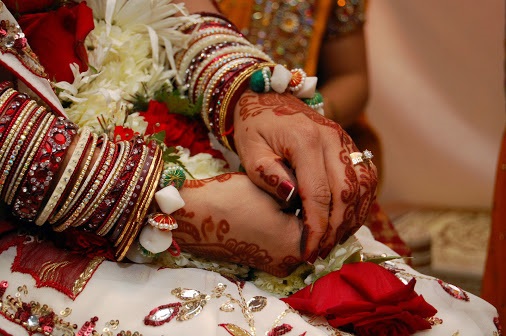The strange case of how women from Kerala are wedding men from Haryana in what often turn out to be disastrous marriages.
Some trends seem astonishing at first, but begin to make sense when closely examined. The case of Kerala women marrying Haryanvi men is one such example. Why would women from a State known for its excellent social and human development indicators, particularly its treatment of women, marry men from a State infamous for its skewed sex ratio?
Recent newspaper reports show that in the context of a huge sex ratio imbalance and an imminent shortage of brides, several Haryanvi men are heading to Bihar, West Bengal and Kerala in search of brides. In order to understand the nature of these marriages and the motivations of these women, we visited Kerala recently.
Women incur the costs
In a hegemonic and heteronormative society, not being married carries a huge cost, as desperate Haryanvi men seeking wives know only too well. In our study, we found that several men who may not have been seen as marriageable in the local context have made their way to Kerala with no expectation except that of getting a wife. Typically, the brides came from very poor families with more than one daughter. And when the women are above a certain ‘marriageable’ age, it is considered better for them to be married than remain single. It is these women, priced out of marriage in Kerala, who marry Haryanvi men. As the father of a recent such bride put it, “If the family was well off, the girl would not be married away in Haryana”.
The case of Rani (name changed) points to the troubling aspect of this arrangement: how marriage is regarded as indispensable, and how women, in particular, incur the greater costs in the process. Rani, about 32 years old, has studied up to Class 8. About eight or nine years ago, she married a man from Haryana and now has two children. She was introduced to her husband through a relative (also married in Haryana to a Haryanvi but returned to Kerala to marry a Malayali). But Rani did not see her fiancé or even his photo until the day of the wedding. “He was quite old,” she recalls. Rani’s wedding was not registered in the temple or in the Panchayat, as is the norm, as it took place on a holiday. She and her husband left for Haryana in a hurry and she does not have a photo of her wedding or even one of her husband and her together. Upon her arrival in Haryana, she discovered that her husband was an alcoholic, and he would regularly abuse her. Thankfully, with the support of her two brothers and her mother, who paid her train fare, Rani was able to keep coming home.
Finally, last year, Rani decided that she had had enough. She fought with her husband and returned to Kerala permanently. Soon after, her husband fell sick and died. When she went back to Haryana and asked for his death certificate, his elder brother convinced her to sign a blank sheet of paper and gave her a photocopy of the death certificate. She realised that the document would be used to cut her off from any claim to her late husband’s house and the little property his family owned, but signed it anyway. True to her fears, she has not heard from them since.
Several other cases show a pattern in the treatment of women in such marriages. In one, a woman tried contacting her Haryana husband’s family after his death, but she was told there was no one by that name. In another, a woman suffering from cancer died in Kerala, but her Haryana husband did not come to see her, either during treatment or after her death. Her mother told us, “We spent on her treatment because she is our daughter. Who else will do it?”
Ticket to a good future
All the families we spoke to said the same thing: that they had agreed to their daughters’ marriage to complete strangers and going away to a distant place so that they would have someone to take care of them in future. This underlined a bitter fact: that marriage in India is still believed to be the only route to a good future for a woman. If the marriage goes well, this wish is fulfilled; if not, she bears the consequences. Many families rush into such marriages with little knowledge about the groom or his circumstances. Some family members rationalised these marriages away as the woman’s ‘destiny’ —“whatever is written in one’s fate is what one gets” said a maternal uncle, whose niece married a Haryana man who turned out to be a different person from the man they saw in the photograph.
In all these marriages, both the family and the woman agree reluctantly to the marriage because the woman is desperate to reduce the “burden” on her family and the family is desperate to find her a good life in the form of a happy marriage. It was distressing to listen to how these women agreed to venture into the unknown, to settle in places where they didn’t speak the local language, where the food was unfamiliar, social norms restrictive, and where discrimination based on skin colour are prevalent. At the same time, their courage is equally startling. The only silver lining was that in some cases, the women managed to come back to Kerala along with their husbands, and both settled down there.
Recent research pointed out that development may have contributed to a rise in the age of marriage in India, but the institution remains strong and is unlikely to break down in the near future. Our study just reinforced this point.

